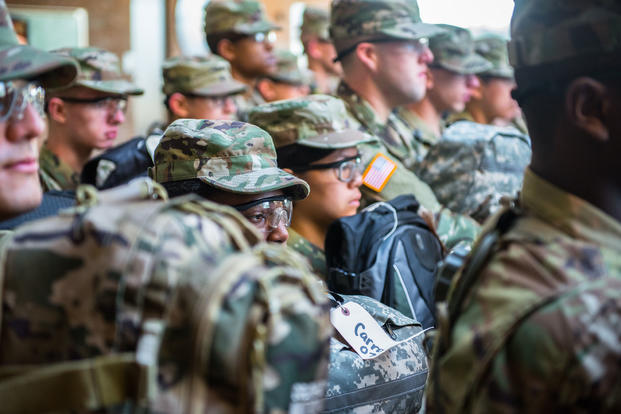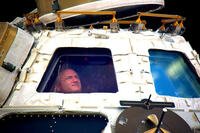The Pentagon wants to improve the methods the Army and Marine Corps use to fill infantry squads with aggressive individuals capable of making clear decisions under the most extreme combat conditions.
The Close Combat Lethality Task Force is trying to identify "best-of-breed science and programs" to find young Marines and soldiers who have the right mix of physical and mental endurance to excel in close combat, according to Sgt. Maj. Jason Wilson, the senior Army enlisted representative for the task force.
"We want to be able to get those soldiers identified early, to find out, 'Do you have the leadership potential to be in the infantry, do you have the mental stability to be able to be in the infantry' and do they have the resilience and the mental capacity to be able to handle some of the things that they may see in the infantry -- to be able to overcome that adversity and bounce back," Wilson told a group of defense reporters Wednesday at the Pentagon.
Defense Secretary Jim Mattis launched the task force in March to find ways of helping the services as well as Army Special Operations Command become more lethal at their craft.
"Close combat is an environment characterized by extreme violence within line of sight of the enemy, where historically the vast majority of military combat casualties occur," Wilson said. "It is a tough job for anybody, to be able to ... close with and destroy the enemy. ... That is our purpose."
The task force is currently managing $2.5 billion worth of reprogramming or new funding requests to identify and accelerate sophisticated new weapons, equipment and training designed to give infantry units an edge on the future battlefield.
But the infantry has often been characterized as a career field that does not require high intelligence.
"We are looking to get the infantry to where it is not a place where we send soldiers that don't have the mental capacity to do other jobs," said Wilson, who has been an infantryman for 23 years. "I'm not saying that everybody in the infantry is bad, but we want to get away from close combat forces, you know, being a place for soldiers that don't meet the requisite criteria to be an intel analyst."
Task force representatives recently met with leaders from the 75th Ranger Regiment at Fort Benning, Georgia, to "gain an appreciation for the models they use for selecting their current soldiers," he said.
But recruiting is only one part of the solution.
"We need to do everything we can do to hang on to those soldiers, to help train the new soldiers," Wilson said, describing how the Marine Corps and the Army must look at new ways to retain seasoned conventional infantrymen. "I dealt with it as well. Soldiers would go to Ranger School, and they would come back and immediately be like ... I am going [Special Forces] or I want to ... go to a Ranger battalion."
The task force has looked at helping the services with funding for retention tools such as bonuses, but Wilson did not offer specific details about those efforts.
"I don't know what the timeline is, but I can tell you there is forward momentum on it," he said.
-- Matthew Cox can be reached at matthew.cox@military.com.














